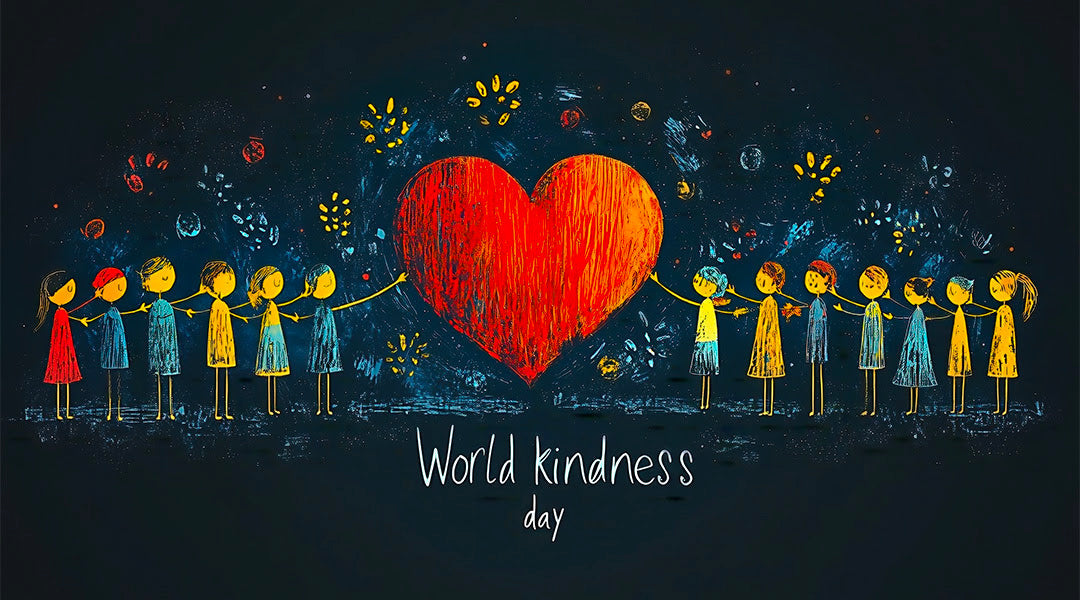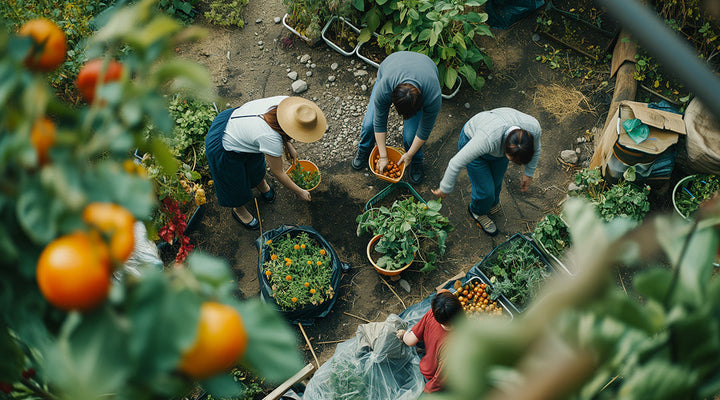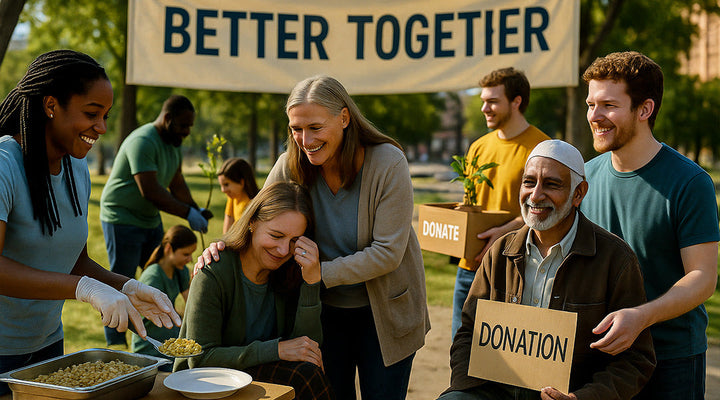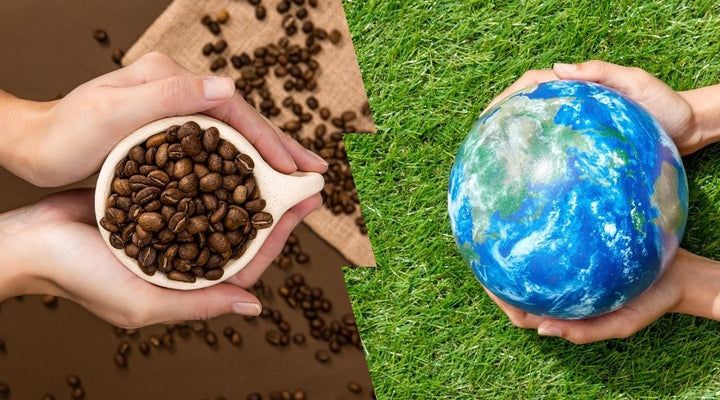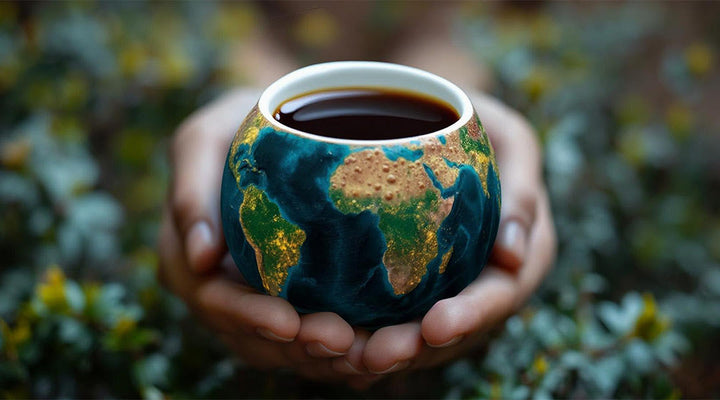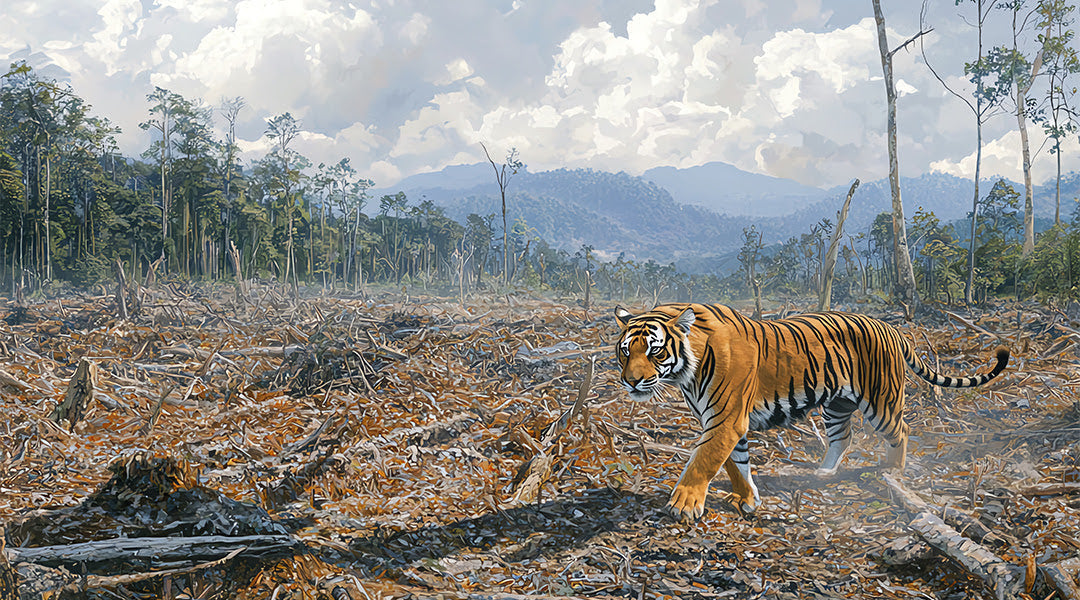
Deforestation, Tiger Populations, And Lifeboost Coffee
“Four score and seven years ago…”
“In a galaxy far, far away…”
“Once upon a time…”
Each of these well-known introductions indicate a journey, events moving us through either space or time to tell a story of things or happenings that once were or will come to be.
Like most stories, whether authentic or fictional, there’s a purpose in their telling, a lesson to be learned, even a warning to be heeded.
And today, I want to begin our discussion with a story, but I want you to keep the above subtle, yet highly important notion in mind, for like most stories, ours has a lesson to learn, a warning to heed…
Long ago, in most regions across planet Earth, vegetation ruled, and wildlife roamed.
Mankind observed unparalleled beauty and magnificence in these years, appreciating the planetary order of things with great awe.
And, as he observed this order, he noticed a give and take:
- Vegetation thrived as birds, bees, other insects, bats, etc drank of nectar, or simply lighted upon flowering plants, then carrying or spreading pollen from flower to flower.
- With each gust of wind, these processes were amplified, as if the breath of the Earth served to carry out and give life.
- Smaller animals fed upon vegetation, insects, and more, controlling pest populations, then enriching the ground through natural waste elimination and ultimately upon giving their small bodies back to the Earth when their part in the circle of life had ended.
- Larger wildlife, though they seemed to be quite capable of domination, also depended greatly on the balance of nature. Even the largest of beasts benefited from their forest home as the towering trees provided shelter and a home, complete with sources of food and streams of fresh water.
- Mankind also took part in the balance of this earthly home, taking only what he needed from the serene sources before him - vegetation and animals for food, cut timber for sources of shelter, water for drinking and bathing.
As long as a sincere respect for each element of this ecosystem was realized and enacted, each part of life’s circle, here on display, did thrive.
Both man and beast alike could look out over their planetary home and see verdant, lush green forests for miles.
As the sun rose and set over this space, serenity wasn’t simply observed, it was lived out, amongst plants, animals, insects, and man alike.
Even the air each one breathed painted a picture of connectivity, of harmony amongst all who enjoyed and depended upon it, large and small, tame and fierce.
However, over time this balance and harmony diminished greatly, and so our seemingly idyllic story turned grim.
Man soon began to take more than he needed, allowing his visions of progress to overshadow the balance required to maintain the connectivity and harmony which allowed this world to exist in the first place.
And sadly, perhaps the hardest part of this story to convey to you is its authenticity.
Yes, this is…was…our world!
So, what happened, specifically?
What has been done to this euphoric existence?
Can this balance ever be restored?
And, what can we do to help?
Let’s find out…
What Is Deforestation?

“About 2000 years ago, 80 percent of Western Europe was forested; today the figure is 34 percent.”
Half of the forests in the eastern part of North America were cut down from 1600-1870 for timber and agriculture.
In roughly 4000 years, China has removed all but approximately 20 percent of its expanse of lush, green forests.
In the last 50 years alone, nearly 20 percent of the Amazon rainforests have been cleared…again, in the last 50 years alone.
What?
How?
And, why?
Deforestation…that’s what, how, and why!
Deforestation can be defined as the cutting down or clearing of trees (all vegetation, really) which cover a large, forested area of land, without replanting.
Throughout history, this practice of clearing forest lands has been used to make space for agriculture, animal grazing, manufacturing, for the use of timber for fuel, and for construction purposes.
As you can guess from the statistics above, this practice has drastically altered landscapes from North America to Europe, Asia, South America, and beyond.
And, this doesn’t simply change the view of a sunrise or sunset. This practice doesn’t only provide man with fuel, fields for growing, and acreage for manufacturing.
Remember, our story in the introduction wasn’t fictional…and this means the practice of deforestation has and is continuing to rob wildlife of food and shelter, even threatening the harmony once known in nature to the point of extinction for many species relying on a needed balance.
When deforestation occurs, balance is essentially thrown out the window, forcing wildlife populations to adapt in ways they were never meant to adapt, overcrowding or removing their homes, shelter, food, and water sources entirely.
We like to think that deforestation only occurs to build shopping centers, subdivisions, or put up skyscrapers, etc. but this extends much further, with much deeper implications.
Let’s just look at coffee, for instance:
Surely, clearing forests to plant row after row of coffee plants can’t be all that damaging, right?
I mean, yes, trees are cleared from a region to do this, but this vegetation (trees, etc.) is replaced with plant life (coffee plants).
Unfortunately, this isn't the whole picture.

When it comes to mass produced coffee, companies clear out vast areas of forest land to plant coffee shrubs, and these plants are heavily treated with harsh chemicals to keep pests at bay, accelerate growth, and more.
Then, these pesticides, fertilizers, herbicides, etc. leech into the soil and surrounding waterways, pollute the air, and on and on.
Deforestation alone has extremely damaging effects on the wildlife living in such regions but coupled with the chemicals introduced into such an area, this has had catastrophic effects, some that we’ve only begun to realize.
The greatest amount of deforestation in our world today is occurring in tropical rainforests.
Here, farmers (not just for coffee) and companies clear large regions for crops.
In the tropics, they also burn forests, which farmers say serves to fertilize the land with ash for better crop yield.
The thing is, whether it’s slash and burn practices or those incorporated for mass market crop growth (as in mass-market coffee production), these methods only allow for a few years of fertile soil, so the process must then be repeated elsewhere…and the disastrous cycle continues.
Aside from the immediate, destructive, effects deforestation brings, this practice also has lasting implications on the air we need for sustaining life.
Think back to third and fourth grade science class with me for a moment - in these years you likely learned about photosynthesis, a process where trees and other plant life take in carbon dioxide from the air, then releasing oxygen.
When trees, specifically, take in carbon dioxide, this is chemically stored in their wood. When these trees are burned, carbon is then returned to the atmosphere, but since such grand amounts of forests have been cleared, there aren’t enough neighboring trees to take in this released carbon (dioxide).
As a result, greenhouse gases then accumulate in the atmosphere, contributing to global warming.
And unfortunately, that’s not all…
As forests are logged or burned, the animal species depending on these areas for food, water, and shelter are rapidly becoming extinct.
Even the soil is negatively affected when deforestation occurs, making erosion more likely.
And, as erosion occurs, the entire forest environment changes, shifting from a humid, moist climate to an open, dry area unsuited for many plants and animals which rely on such climates for their existence.
While countless species, including birds, insects, plant life, and mammals are affected, for times’ sake today we’ll focus on one majestically fierce creature harmed by such practices - the tiger.
Deforestation And Tiger Populations

When various species are threatened with extinction, we often fail to realize the implications such an absence could have on the world.
Tigers, for instance, play a crucial role in maintaining both health and harmony in their ecosystems.
Should tigers become extinct, both wildlife and human populations would suffer.
- Tigers are at the top of the food chain, and their presence keeps other wildlife populations regulated. Without tigers, other species of prey would grow exponentially, threatening the extinction of lower food chain species, including plant life.
- In many countries, tigers have great cultural significance. Their extinction would represent cultural and spiritual loss for several populations and communities.
- Tigers create many employment opportunities and generate a robust revenue stream as they are a highly sought after species within wildlife tourism. A loss of this species would cause great harm to many local economies.
- Scientists have studied tigers for many years, learning much about genetics, conservation, and the relationship between predators and prey, thus extinction would cause great loss here as well.
As of today, conservation efforts have been successful regarding some tiger species, but others still remain negatively affected by deforestation.
Take Bengal tigers, for instance: In 1900, there were an estimated 100,000 Bengal tigers living in India, but by 1972, that number had dwindled to around 1,800.
Due to conservation efforts, that number has almost doubled, with populations reaching beyond 3000 in recent years.
While this is promising, clearly tiger populations aren’t what they once were, and for some species, such as Sumatran tigers, the outlook is far less promising.
You see, deforestation causes a rift between tiger populations, “fragmenting them into even smaller groups. Consequently, mating and reproduction efforts become more difficult for the species.”
In the case of Sumatran tigers, this had led to significant losses, especially over the last 50 years.
From 1970 to today, the Sumatran tiger population has diminished by more than 50 percent.
Subsequently, deforestation has drastically increased in the territories where these tigers have lived for centuries.
In 2006, Sumatra’s annual deforestation rate was at 515 million hectares per year. Today, that rate has increased to 1,550 million hectares annually.
The Bali and Javan tigers, native to Indonesia, have already become extinct, and should deforestation, commercial killings, and illegal trade continue, the fate of the Sumatran species lacks hope as well.
Even the Bengal tiger populations of India, though improving and rightfully offering the most hope in light of conservation efforts, have diminished exponentially over time.
And these grim details beg one serious question - what can be done…what can we do to help?
How Can We Help?

More than ten years ago, many of the world’s largest companies saw the damage deforestation was causing in our world, and they pledged to make a change, promising to incorporate practices which would end deforestation by the year 2020.
While some companies implemented helpful alternatives, most of these large businesses have since been described by environmental organizations as lacking a needed understanding of their supply chains.
Tropical Forest Alliance director, Justin Adams, has stated the approach implemented by many companies for such an initiative seemed to be naive, describing the problem as being more complex than most realize.
Greenpeace has stated that “ending deforestation is our best chance to conserve wildlife and defend the rights of forest communities.”
They believe the power to end such practices lies in the marketplace, stating “if corporations have the power to destroy the world’s forests, they also have the ability to help save them.”
And here’s a small glimpse into the actions being implemented by companies across the globe to end this practice…
- L’Oreal aimed to make all their products “zero deforestation” certified by 2020. They are “committed to sourcing their products from 100 percent renewable raw materials from sustainable sources to ensure their business does not support any form of deforestation.”
- Disney has made the decision to drop its paper suppliers that have been linked to deforestation. Being the world’s largest publisher of children’s books and magazines, Disney’s no deforestation policy not only includes paper sourced directly through Disney, but also those sourced by licensees, vendors, and suppliers.
- Hershey is another company committed to achieving a deforestation and conversion free supply chain, here for their cocoa, palm oil, and soy as well as their pulp and paper packaging. The company is holding to their No Deforestation Policy, which they believe will be achieved by December of 2025.
These are only a few examples of companies committing to change, for the sake of our planet and its fragile ecosystems…but what about Lifeboost?
We mentioned in the section above that mass marketed coffee is responsible for devastating deforestation in some of the world’s most lush forest regions, and you’ve likely heard that for every cup of coffee consumed, roughly one square inch of rainforest is destroyed.
So, if coffee is the leading cause of rainforest deforestation, what does that say about Lifeboost Coffee?
Well, deforestation is just one of many reasons why we do things differently here at Lifeboost!
First, we don’t grow our coffee using conventional methods.
Not only do we never use harsh chemicals in any of our processes, we also never clear forest lands to plant our coffee shrubs.
Actually, since we began this journey with a story, I think our processes can best be explained in the same manner, again with full authenticity…
In the rainforest mountains, amidst magnificently beautiful, lush green forests, an aged coffee farmer rises early to greet the day.
He and his team have freshly planted many coffee shrubs on their small, family plantation, and today they’ll be checking in on their growth.
They travel up the mountain on a scooter, the pathway narrow, but rewarding for when they reach their destination, they are greeted in song and sight.
Bees buzzing, insects fluttering about, birds chirping before they swoop in to make a meal of those pests which would typically threaten the growing coffee plants.

As the leaves from neighboring trees slowly fall amongst the shrubs, the farmer grins with delight, explaining to his apprentice that this falling foliage will serve to enrich the soil, ultimately contributing to the nutrient density of the coffee cherry.
They must keep a careful watch on the area as they tend to the growing plants, for they share the mountain terrain with native predators.
…this is but a small glimpse into the daily life of our coffee farmers, but I hope you’ll see within these words a scene of balance, one resembling the story in our opening.
In our desire to bring you clean, healthy coffee, we are also compelled to leave and even create spaces of pure, clean, and healthy earth!
- This is why we never remove forest lands to grow our coffee, instead adding to the biodiversity of our growing regions.
- This is also why we never use harsh chemicals or incorporate any practice that would harm or potentially harm the ecosystems where our coffee is grown.
- We’ve even adopted an Indonesian Sumatran tigress, named Cinta, to aid in conservation efforts and awareness.
- Apart from this, we also use EcoCart, and this has allowed us to officially offset 436,154 pounds of carbon dioxide across 11,266 orders.
A little more on these efforts -
Though we never incorporate deforestation, as a company we’re committed to doing everything we can to bring aid to this crisis.
So, for a clearer picture, by offsetting this amount of CO2, it’s as if we’ve offset:
- 507,200 miles driven by an average gasoline vehicle
- 38.5 US homes’ electricity usage for one year
- 24.1 million smartphones charged
This also translates to an excess of 3,271 tree seedlings grown for ten years, and more!
While we don’t commonly think pride or boastfulness is a beautiful quality, this is something we will happily and proudly proclaim, not simply because we believe we’re making a difference in this world, but because we believe we can all make a difference.
We hope by sharing our stats and practices, you can not only appreciate the contributions you’re making to our planet by choosing Lifeboost, but perhaps others will be encouraged to join the fight as well…against deforestation, for tigers, and for our world!
Check out Lifeboost Coffee Grata Medium Roast.

Becky is a mother, educator, and content writer for Lifeboost Coffee. She has had three years’ experience as a writer, and in that time she has enjoyed creatively composing articles and ebooks covering the topics of coffee, health and fitness, education, recipes, and relationships.
- https://ourworldindata.org/deforestation#
- https://education.nationalgeographic.org/resource/deforestation/
- https://www.rainforestcoalition.org/deforestation-and-degradation/
- https://www.green.earth/blog/countries-highest-deforestation-rates
- https://www.fs.usda.gov/managing-land/wildflowers/pollinators/importance#
- https://www.cfr.org/backgrounder/can-amazon-countries-save-rain-forest#
- https://www.labroots.com/trending/plants-and-animals/7509/sumatran-tigers-impacted-deforestation-fragmentation#
- https://www.nature.com/articles/s41467-017-01656-4#:~:text
- https://www.lionstigersandbears.org/threats-facing-tigers-today-and-our-efforts-to-help/#
- https://www.zsl.org/news-and-events/feature/tiger-conservation-success-2023
- http://www.projectarkfoundation.com/animal/sumatran_tiger
- https://www.nytimes.com/2021/12/02/climate/companies-net-zero-deforestation.html
- https://www.greenpeace.org/usa/forests/solutions-to-deforestation/
- https://www.treehugger.com/companies-doing-most-to-stop-deforestation-forest-4858424#
- https://www.onegreenplanet.org/animalsandnature/7-companies-working-to-end-deforestation/
- https://www.thehersheycompany.com/en_us/home/sustainability/sustainability-focus-areas/environment/deforestation.html
- https://www.theworldcounts.com/challenges/consumption/foods-and-beverages/environmental-effects-of-coffee-production
- References for the article to confirm data and information.
Drop a Comment
this article was very good and full of information on the deforestation. issues around us today. i enjoy Lifeboost and have purchased it for several years. I ordered it initially because it was supposed to be low acid. I Love the taste and drink 3-4 cups in the mornings. Thank you for what you do and the tigers in the photos are simply magnificent! I encourage my family and friends to order and drink LIFEBOOST and it is all I serve at my home. Yes it is expensive but knowing the process and the enviornmental action you are taking, plus the great flavor is so worth it! I know many veterans and firemen offer their coffee, but nothing compares to LIFEBOOST. Mainly, they do not offer “CLEAN” coffee!




